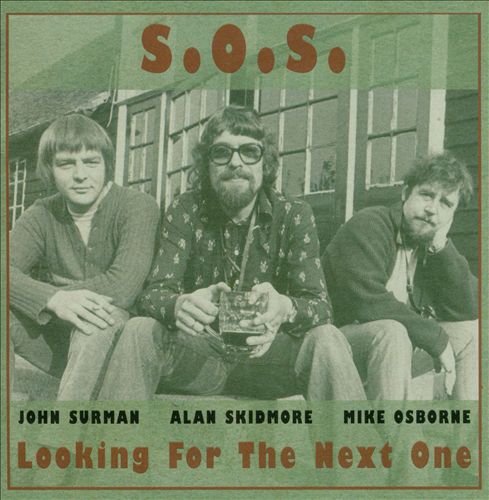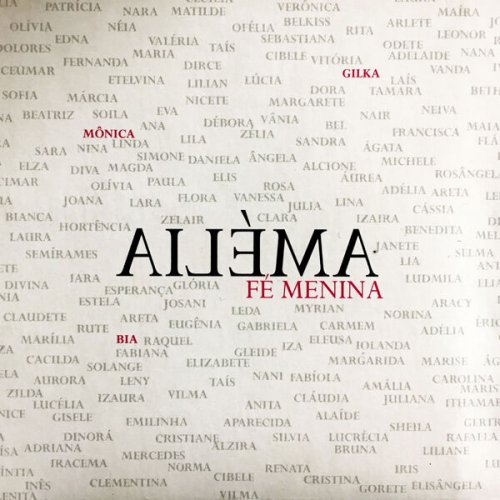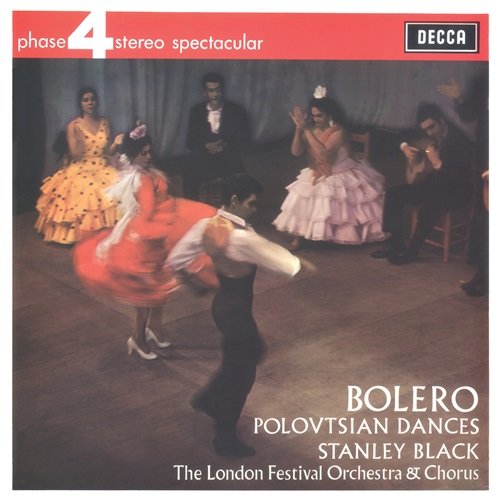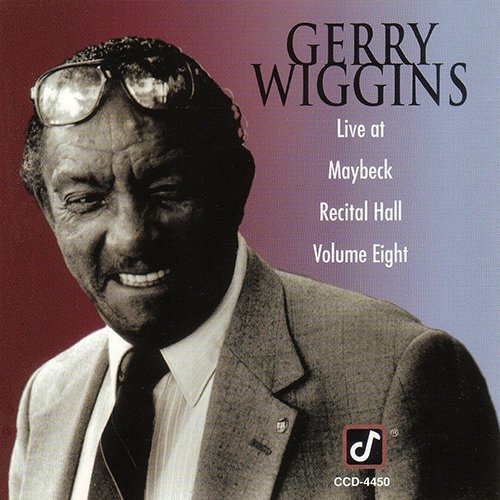S.O.S - Looking For The Next One (2013)

Artist: S.O.S
Title: Looking For The Next One
Year Of Release: 2013
Label: Cuneiform / RUNE 360
Genre: Free Jazz, Avant-Garde Jazz
Quality: FLAC (tracks)
Total Time: 2:00:15
Total Size: 683 MB
WebSite: Album Preview
Tracklist:Title: Looking For The Next One
Year Of Release: 2013
Label: Cuneiform / RUNE 360
Genre: Free Jazz, Avant-Garde Jazz
Quality: FLAC (tracks)
Total Time: 2:00:15
Total Size: 683 MB
WebSite: Album Preview
01. News [02:53]
02. Rashied [08:53]
03. Looking For The Next One [14:22]
04. Country Dance [07:43]
05. Q.E. Hall [14:17]
06. The Mountain Road [04:47]
07. Introduction [01:06]
08. Suite [25:18]
09. Trio Trio [23:28]
10. Up There [15:11]
11. Legends [02:13]
When is a saxophone trio more than a saxophone trio? When they also play synthesizer, keyboards, and drums, as S.O.S. -- baritone/soprano saxophonist John Surman, alto saxophonist Mike Osborne, and soprano/tenor saxophonist Alan Skidmore -- did during the trio's brief existence during the mid- to late '70s. Before Cuneiform released the two-disc archival collection Looking for the Next One in 2013, S.O.S. had only one album to their name, an eponymous disc on Ogun in 1975, although the trio members were all major contributors to various other '60s and '70s British jazz projects. The 1975 album revealed Surman's multi-layered keyboards and synthesizer and Skidmore's drums to be effective complements to the threesome's saxes (and Surman's bass clarinet), and the previously unreleased Cuneiform set provides even stronger evidence of the group's stellar multi-instrumentalism. Three late-1974 London studio recordings begin disc one, the three-minute leadoff track "News" immediately establishing that S.O.S. had feet planted in both electronic music and improvisational jazz. The track actually features only Surman, playing forceful soprano with copious echo and wah-wah over the insistent sequencer patterns and rhythms of his EMS synthesizer. Those seeking unadulterated saxophone dialogues get their wish with "Rashied," written by Coltrane drummer Rashied Ali; the trio begins with an initially sparse conversation and builds into a tight riff supporting animated free blowing by each of the members in turn.
The title track suggests multiple groups sequentially morphing one into the other: from an intro of contrapuntal synth/keyboard ostinatos to Surman's expansive grand piano over a deep synth drone; from Skidmore's extended Coltrane-esque tenor showcase to his splashy rolling drums beneath Osborne's wild alto as Surman triggers a low burbling synth sequence and joins the fray on wah-wahed electric keys. "Looking for the Next One" indeed. The first disc's latter half features three additional studio recordings, all from September 1975. At close to eight minutes, the all-saxophone "Country Dance" is nearly twice the length of the version on the 1975 album, retaining the tune's regal theme and displaying astoundingly telepathic levels of interplay, while guest drummer Tony Levin expands the percussive capabilities of S.O.S. on the 14-minute "Q.E. Hall" and the Irish reel "The Mountain Road." But disc two -- recorded live at the Balver Hoehle Jazz Festival in Balver, Germany in July 1974, before S.O.S. had set foot in a recording studio -- presents the trio at its best. Seamlessly integrated multi-part suites dominate, including two -- "Trio Trio" and "Up There" -- that visit themes heard on disc one, with the group truly fired up by the spellbound audience. At times, the 25-minute "Suite" recalls Soft Machine's classic (Dean/Ratledge/Hopper/Wyatt) quartet, which had evolved toward a similarly fiery, exploratory, angular, and spacy style of music several years previously; here, S.O.S. approach that unique sound from their own vantage point, making this set a must-hear for fans of the inimitable world-class electric jazz that emerged from Britain during the '60s and '70s era.
The title track suggests multiple groups sequentially morphing one into the other: from an intro of contrapuntal synth/keyboard ostinatos to Surman's expansive grand piano over a deep synth drone; from Skidmore's extended Coltrane-esque tenor showcase to his splashy rolling drums beneath Osborne's wild alto as Surman triggers a low burbling synth sequence and joins the fray on wah-wahed electric keys. "Looking for the Next One" indeed. The first disc's latter half features three additional studio recordings, all from September 1975. At close to eight minutes, the all-saxophone "Country Dance" is nearly twice the length of the version on the 1975 album, retaining the tune's regal theme and displaying astoundingly telepathic levels of interplay, while guest drummer Tony Levin expands the percussive capabilities of S.O.S. on the 14-minute "Q.E. Hall" and the Irish reel "The Mountain Road." But disc two -- recorded live at the Balver Hoehle Jazz Festival in Balver, Germany in July 1974, before S.O.S. had set foot in a recording studio -- presents the trio at its best. Seamlessly integrated multi-part suites dominate, including two -- "Trio Trio" and "Up There" -- that visit themes heard on disc one, with the group truly fired up by the spellbound audience. At times, the 25-minute "Suite" recalls Soft Machine's classic (Dean/Ratledge/Hopper/Wyatt) quartet, which had evolved toward a similarly fiery, exploratory, angular, and spacy style of music several years previously; here, S.O.S. approach that unique sound from their own vantage point, making this set a must-hear for fans of the inimitable world-class electric jazz that emerged from Britain during the '60s and '70s era.




![Frank Sinatra - Christmas (Remastered) (2013) [Hi-Res] Frank Sinatra - Christmas (Remastered) (2013) [Hi-Res]](https://www.dibpic.com/uploads/posts/2025-12/1765618088_fsc500.jpg)

![Club Bolero, Armik - A Day in Brazil (2007) [Hi-Res] Club Bolero, Armik - A Day in Brazil (2007) [Hi-Res]](https://img.israbox.com/img/2025-12/15/5l607nskcv4xb0n237d8ngs7q.jpg)
![Tomasz Stańko - Unit (Polish Radio Sessions vol. 2/6) (2025) [Hi-Res] Tomasz Stańko - Unit (Polish Radio Sessions vol. 2/6) (2025) [Hi-Res]](https://www.dibpic.com/uploads/posts/2025-12/1765790300_cover.jpg)
